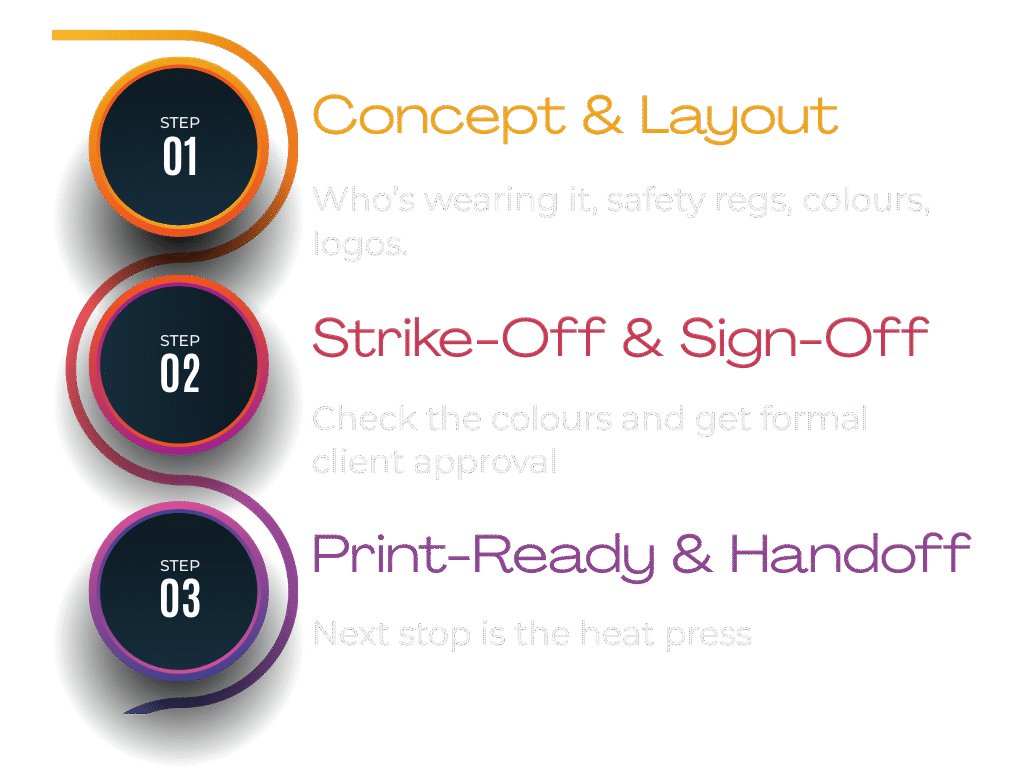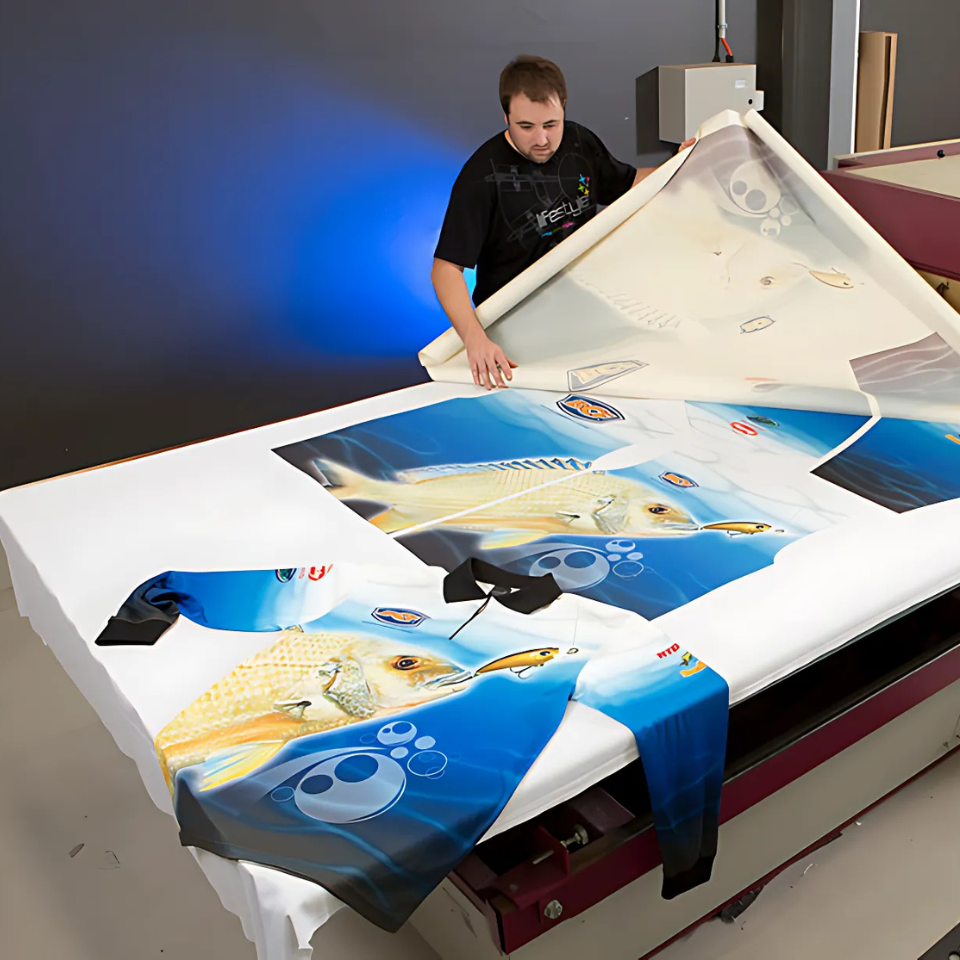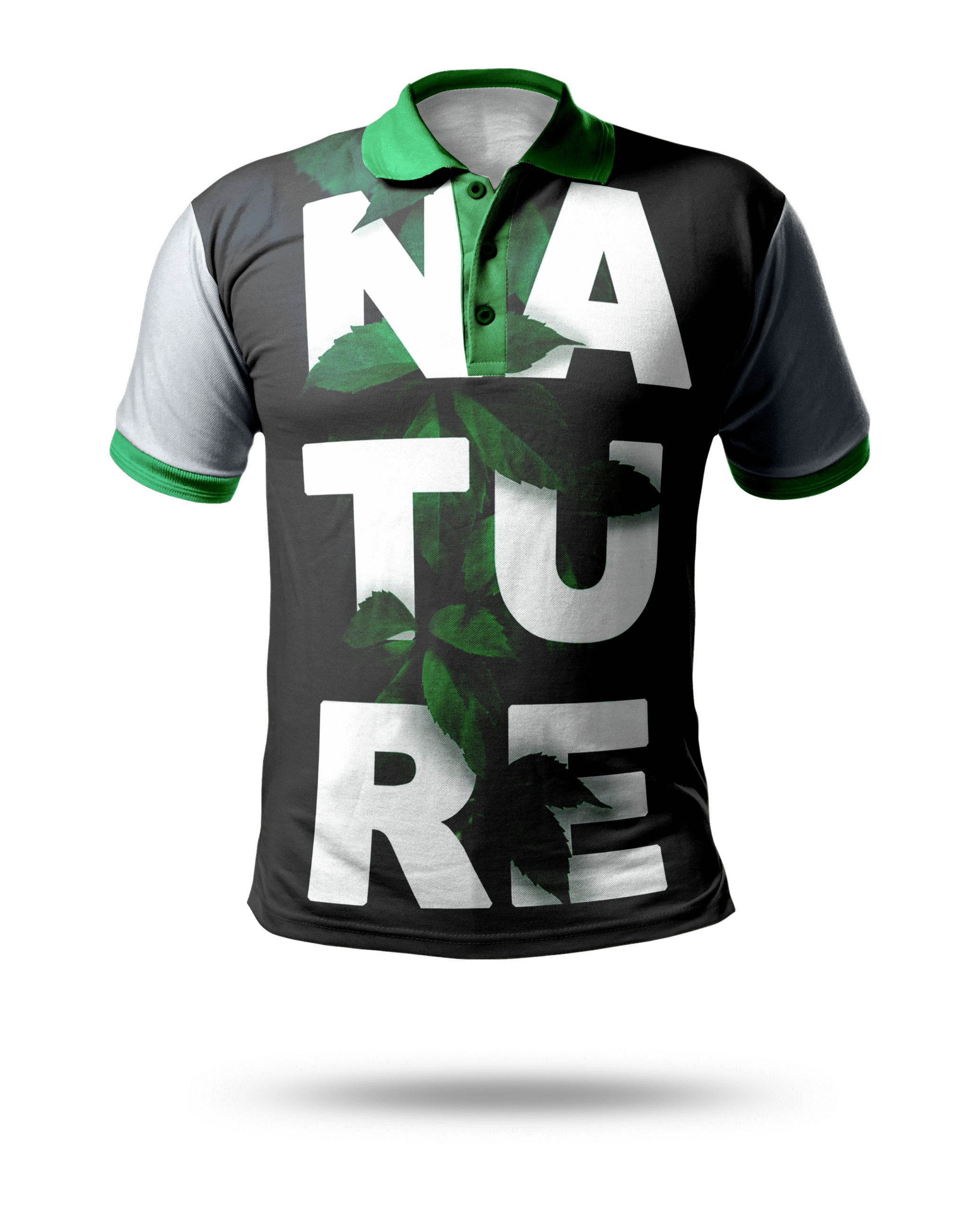

Norsafe: Protecting Your Workforce, Elevating Your Brand
When it comes to safety, branding, and workwear solutions, Norsafe is your trusted partner.
Unveiling Sublimation Printing

Here’s a straightforward, no-fluff walk-through of how we turn a blank piece of fabric into a fully-branded, sublimated garment at Norsafe Polokwane:

Designing a sublimated garment
The whole shebang in just
3 big-picture steps
Concept & Layout
Nail the brief: who’s wearing it, safety regs, colours, logos.
Sketch the look, then build clean vector panels (front, back, sleeves, etc.) with bleed already added.
Drop the art onto a 3-D mock-up so the client can see how it wraps, then lock in brand colours (CMYK swatches ready for the press).
Strike-Off & Sign-Off
Print a small sample strip on the actual fabric, press it, and check the colours in daylight.
Tweak saturation or alignment if needed, then get formal client approval in writing.
Confirm panel sizes match fabric roll widths so production doesn’t waste paper.
Print-Ready & Handoff
Mirror every panel, nest them efficiently, embed/outline fonts, and export a high-res PDF/X-4 (or the RIP’s preferred format).
Attach a build sheet with press settings, colour references, and sewing notes.
Hand the lot to production—next stop is the heat press, and you’re done.


Printing the Transfer
Special transfer paper: We load a wide-format sublimation printer with high-release paper.
Sublimation inks: Unlike plastisol or DTG ink, these are water-based dyes that sit on top of the paper, ready to gas off later.
Mirror-image print: We flip the artwork horizontally so it reads correctly once transferred onto the garment.
Fabric Preparation
100 % polyester (or high poly-blend) only: Sublimation bonds to polymer fibres; cotton won’t work.
Pre-press: A quick 5-second press at low pressure drives out moisture and flattens wrinkles so the print transfers evenly.
Lint roll & tack cloth: Tiny fibres show up as white dots—one pass with a lint roller saves a lot of rework.

Fabric Preparation
100 % polyester (or high poly-blend) only: Sublimation bonds to polymer fibres; cotton won’t work.
Pre-press: A quick 5-second press at low pressure drives out moisture and flattens wrinkles so the print transfers evenly.
Lint roll & tack cloth: Tiny fibres show up as white dots—one pass with a lint roller saves a lot of rework.
Alignment & Taping
Line-up on the jig: We position the transfer sheet face-down on the garment, using templates or laser guides for repeatability.
Heat-resistant tape: A bit of specialised tape keeps everything locked so nothing shifts when the heat press closes.
The Heat-Press Magic
Time, temperature, pressure: Typically 190 °C–205 °C for 45–60 seconds at medium pressure, but we dial it in per fabric weight.
Phase change: The solid dye turns into a gas and penetrates the polyester fibres—this is where the “sublimation” name comes from.
Instant dry: As soon as the press opens and the fabric cools, the dye re-solidifies inside the fibres—permanent, wash-proof, and stretch-friendly.
Cooling & Paper Removal
Peel hot or warm: Depending on ink set, we peel the paper straight away to avoid ghosting.
Colour pop: The print looks 10 × brighter off-press because the dye sets inside the fibre, not on top.

Post-Press Finishing
Quality check: We inspect for colour consistency, alignment, and any press marks.
Steam or re-press: If needed, a light steam or second short press smooths the fabric.
Cut & sew (for panels): For all-over jerseys we sublimate flat panels first, then stitch them together for edge-to-edge graphics.



Final Product Handover
Wash-ready: Colours won’t crack, peel, or fade under normal wear.
Care tag: We add wash instructions—cold wash, no bleach, tumble-dry low—to keep the garment looking fresh.
Pack & dispatch: Branded swing tags, folded, bagged, and shipped—ready for your team’s next shift.
Pro tip:
Because the dye becomes part of the fabric, sublimation keeps high-vis and PPE compliant logos breathable—no stiff vinyl or embroidery weighing the garment down. Perfect for long, hot South African shifts.